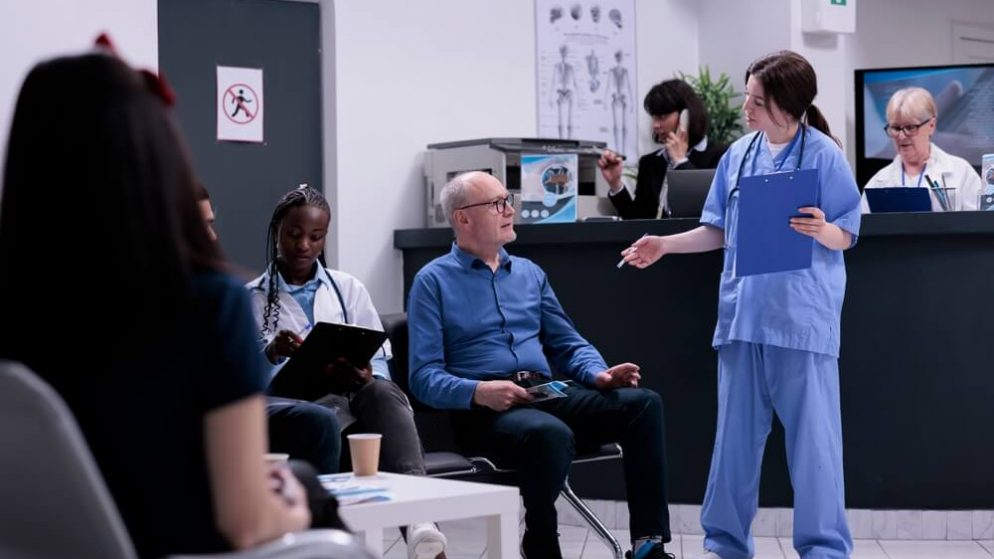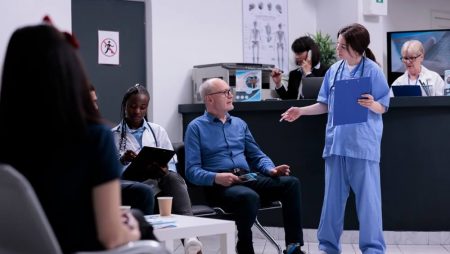



Get new exclusive access to healthcare business reports & breaking news




When it comes to customer experience, the healthcare industry sits near the top for failing miserably. 95% of patients report they have had bad experiences in some aspect related to healthcare. Fortunately, healthcare providers are discovering that it is important to take a patient-centric approach which results in better patient outcomes. New technology has provided several opportunities to improve the customer experience. The healthcare industry has embraced the changes by using several tools to improve how healthcare service is delivered to those who need it most. Some of the tools are outlined below.
AI has made incredible improvements in so many different sectors, including healthcare. You could say that AI is the perfect fit for the detail-oriented format healthcare activities follows. AI can perform several tasks freeing up staff to focus on other activities. For example, AI is used in taking appointments, admitting patients, documenting medical information, and much more. Research has shown that predictive AI, used in such applications as chatbots, increases the efficiency of patient care. Statistics put AI at improving patient admissions by 60 percent and increasing patient discharges by 21 percent.
It may sound obvious, but without proper signage, patients seeking a specific department may get lost in your typical hospital’s endless maze of hallways. Although different color painted lines on walls and floors are helpful, nothing works better than a digital sign. Plus, digital signs permit short messages to be displayed, enhancing wayfinding efforts and assisting those who need to become more familiar with the layout of a specific wing or building. With effective digital signs, like the ones available from LOOK DS Service, patients can locate labs, offices, exits, elevators, pharmacies, parking, waiting rooms, and more without asking for directions.
Telemedicine has become one of the most popular innovations in the healthcare industry thanks to new technology. In addition to giving patients better access to medical professionals via telephones and internet-enabled devices, telemedicine has made it possible for patients living in remote regions or with serious mobility issues to connect with healthcare workers.
Even for those patients without reliable transportation or assistance to get to and from a clinic appointment, telemedicine has given them access to the help they need. It has also increased the reach of healthcare, including individuals who may not have had access to a medical professional. Telemedicine has also streamlined how doctors and nurses deliver their services, resulting in better patient care.
Although personalization is probably an old-school concept in the healthcare realm, it does make a difference in the customer experience. The advancements in digital technology make personalization much easier, including using patient records to analyze potential health risks and create treatment plans to address those specific concerns and provide health reminders, appointment scheduling on a personalized level, and other direct communications that target patients directly.
Surveys say that IoT technologies, in one form or another are already in place in 87 percent of healthcare facilities. The interesting fact is that IoT technologies include many applications ranging from smart surgeries and medicine dispensing to sensors and other wearable remote-controlled devices that use automation. Patients and their families find comfort through the devices and other aspects of IoT, which contributes to an improved customer experience by simply removing stress. There are many ways that IoT technology can improve the customer experience beyond that.
For example, real patient monitoring is possible with IoT devices. This leads to better care and better patient outcomes. Various wirelessly-connected devices monitor and track data providing medical professionals with the information they need to develop personalized care plans. The level of personalization that comes from wearable devices gives most patients and their families, peace of mind. As for which devices are the most popular, activity monitors, sun exposure sensors, blood pressure monitors, and sleep pattern sensors are the most commonly used. That will likely change as technology advances, and more intricate devices are developed to track other readings and collect data on other conditions.
Big data is a term that is becoming commonplace in today’s technological world. The healthcare industry is one place where massive volumes of data collected over time can benefit people the most. When you consider how much data is generated by just a single patient, it makes sense that there has to be a way of leveraging that information with data collected from hundreds, thousands, and more patients. It is through analysis using specific data points that information stats become clear and useful.
Some of the benefits of data leveraging include decision-making on ailment and risk predictions that are far more accurate than before, with proof to back those decisions up. Tests can be administered based on findings through the data that will improve healthcare solutions. These solutions will have better accuracy and improve patient outcomes resulting in an improved customer experience. Essential treatments can be identified and implemented on patients quicker through data leveraging, leading to improved health and providing the education necessary for patients and families to maintain better health. Finally, the volume of data collected over years of records assists researchers in finding new cures or better health solutions for various ailments.
There have been serious changes to the healthcare industry in recent years. Technology entered the picture and made vast improvements. Then the pandemic hit, which forced new ideas and innovation into the forefront, taking advantage of the technology already in place. You could say that the pandemic showed the importance of technology in ensuring customer satisfaction when restrictions forced patient care away from facilities with exceptions. Now that many of these tools are commonplace and the pandemic is past its peak, healthcare continues to improve and benefit patients dealing with all kinds of health issues.